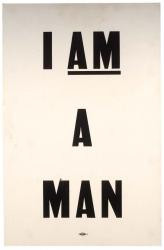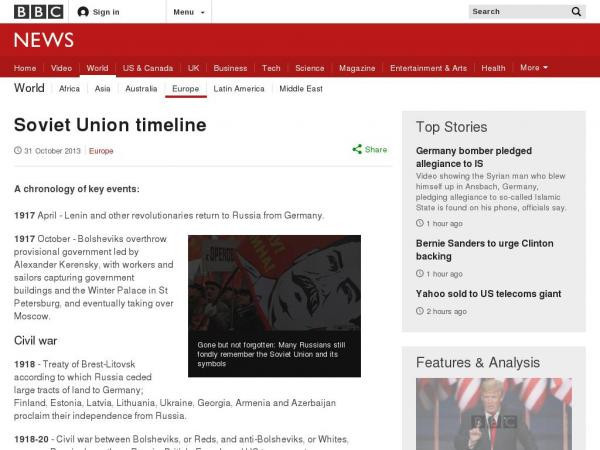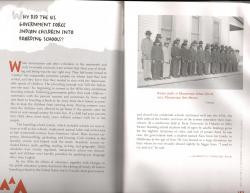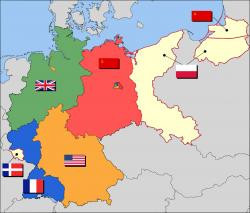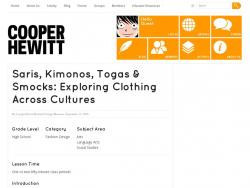Kate Harris
Social Studies teacher
Pittsburgh CAPA
Middle School (13 to 15 years old), High School (16 to 18 years old)
Teacher/Educator
Language Arts And English, Civics, Literature, Cultures, Economics, Social Studies, Geography, Writing, US History, Arts, Other
I'm a history-lover, art fan, and bookworm. I taught high school history (U.S. History and World Religions) for ten years in North Carolina, teach currently in Pittsburgh, PA, and am working to help teachers make the most of this new resource!
Kate Harris's collections
I Am a Man--We Are Human
This collection traces how a powerful phrase and its variations have been adopted by different voices in United States history.
Questions to consider:
-How is the phrase (and/or design of the original poster) used? How do the changes and adaptations it has undergone reflect different time periods and issues in United States history?
-Why has the phrase "I am a Man" had such staying power? Alternately, why has "We Are Human" been adopted?
-How do the above phrases reflect or reject concepts like "separateness," "personal identity," or "inclusion"?
-Why do you think many artists are drawn to the phrase and design? Do you think the artists expect viewers to recognize the influence of the original work? Why or why not?
-Why is the verb underlined? How would it change if another word were emphasized?
-What other examples could be included in this collection? This collection focuses primarily on visual interpretations of the phrase. Can you think of literary or pop culture examples?
Tags: Ernest Withers, Dread Scott, Ferguson, Abolition, Sojourner Truth, Memphis, sanitation workers, immigration reform, refugee crisis, Hank Willis Thomas, protest, sign, placard, broadside, civil rights
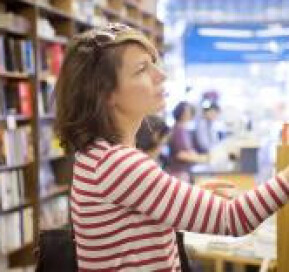 Kate Harris
Kate Harris
9
WWI Propaganda
<p><u></u>This student activity includes a variety of types of propaganda related to World War I. The United States government took great action when it came to World War I—they helped organize workers, recruit military members, and regulate the economy so that American could have a successful impact on the war. The Committee of Public Information formed by George Creel and other propaganda-producers used advertising techniques from businesses to make appeals to the average citizen and encourage them to make a difference. This assignment will ask you to connect each piece of propaganda to one of four major goals of the U.S. government during the war and to analyze a few specific pieces for author, audience, purpose, and even the medium/form. </p><p>Essential questions include:</p><ul><li>What are the four main goals of the government during World War I?</li><li>Why and how did propaganda creators target specific audiences with their messages?</li><li>What are the effects of changing the medium or form of propaganda on how it might be received?</li></ul><p>Tags: World War I, WWI, selective service, draft, liberty bonds, propaganda, music, Uncle Sam, persuasive writing, cause effect</p>
 Kate Harris
Kate Harris
14
Artifacts from the Battlefield: WWI
This is a collection of artifacts from World War I, including photographs, uniforms, and some surprising contributors. Students will watch a video to observe how a curator connects an object (in this case a woman's AFFW uniform) to the person who used it, and then choose three objects from the collection to study before sharing findings with other classmates. Students should think about the guiding questions below as they investigate the objects in the collection.
Guiding questions:
How was World War I different from wars that came before?
What impact did technology have on the war?
What kinds of threats did soldiers face during World War I?
How did soldiers find comfort during World War I?
How might the experience of World War I have influenced the culture and politics of the years following it?
 Kate Harris
Kate Harris
14
National Parks
This topical collection focuses on the establishment of a national parks system in the United States. Items in the collection can be used to address the following questions:
-What is the difference between "conservation" and "preservation"? Which view towards nature seems to influence our national parks system today?
-In United States history, there is often a tension between progress and protection, or change and tradition. How is that tension reflected in the story of the national parks system? Consider the economic demands of a growing nation and the impulse to make the natural world accessible to all members of U.S. society.
Tags: Parks, environment, conservation, preservation, Muir, Sierra Club, Roosevelt
 Kate Harris
Kate Harris
19
Sputnik: Scientific Advances, Public Perception, and Political Priorities in the Cold War
The Soviet launch of Sputnik did much more than simply send a satellite into space. The announcement that the USSR had successfully launched a satellite that orbited the Earth was used to dramatize Soviet scientific superiority and set into motion a series of actions and statements by U.S. politicians designed to manage the public's fears and prevent the United States from falling behind.
Guiding questions:
-When it comes to military strength, which is more important: reality or perception?
-How do the sciences impact national defense?
-Why was a space program considered important and necessary for both the Soviet Union and the United States?
-How and why do foreign events impact domestic politics and culture?
Tags: Wilson Center, Cold War, Space Race, Sputnik, Technology, Soviet Union, USSR, Communism
 Kate Harris
Kate Harris
21
Civil Disobedience
<p>This is a topical collection on the concept of civil disobedience. Users are invited to explore the theme of civil disobedience through texts from Sophocles, Shelley, and Thoreau and a variety of images. </p><p>Questions to consider:</p><p>-Does civil disobedience pose a threat to society?</p><p>-What examples of civil disobedience are portrayed here? What are some other examples?</p><p>-What is the role of civil disobedience in today's society?</p><p>-Some people prefer the phrase "passive resistance" to "civil disobedience." Compare and contrast these two terms.</p><p>-How does one measure the success of an act of civil disobedience? Policy change? Public influence?</p><p>-What role does violence play in civil disobedience?</p><p>Tags: King, Gandhi, protest, Birmingham, Greensboro, suffrage, Boston Tea Party, Antigone, Masque of Anarchy, Tambo, nun, Randolph, civil rights, Mexican-American War, Goldman</p>
 Kate Harris
Kate Harris
17
Art in American History--ISTE Conference 2016
A collection of resources used for a mini-session at the ISTE Conference 2016. Includes strategies and resources for integrating art into an American History course, utilizing Harvard University & Project Zero's "Making Thinking Visible."
 Kate Harris
Kate Harris
11
Who provoked the Korean War?
"On June 25, 1990, the North Korean Army launches it surprise assault on the South." But what led up to this moment? This activity asks students to read primary source documents and interpret historical events surrounding the Korean conflict. Students will look for motives and evidence in a variety of accounts and determine who was responsible for starting the Korean War. <br />
<br />
There are resources with quiz questions that students can answer directly, or teachers may prefer to print documents and resources for in-class use. It is recommended that teachers preview the materials in this teaching collection as there are a variety of ways to structure the lesson.<br />
<br />
Essential questions include:<br />
-How would you describe the relationship between Kim Il Sung and Joseph Stalin?<br />
-Was North Korea, a smaller country, pulling a superpower into a conflict?<br />
-Was the Soviet Union using North Korea to further its goals?<br />
-Why did the United States choose to respond via the United Nations forces instead of unilaterally? How did this decision impact the conflict?<br />
-How does this incident reflect larger themes and issues of the Cold War, especially the role of the United Nations, over-arching foreign policy strategy, and nuclear fears?<br />
<br />
Tags: Wilson Center, Cold War, Korea, China, Truman, Eisenhower, Macarthur, Soviet Union, USSR, Communism
 Kate Harris
Kate Harris
17
Building the Berlin Wall
This teaching collection explores the Berlin crisis leading to the building of the Berlin Wall. It addresses the following guiding questions through primary/secondary sources and teaching suggestions:
-Why was Berlin the center of crisis in between 1958-1961?
-Why did the Soviet Union sanction the construction of the Berlin Wall?
-Why did the United States allow it to happen?
-How did the Wall affect the lives of East and West Berliners?
-Does the end (no more crises in Berlin) justify the means (the Wall)?
-How does this incident reflect the greater issues of the Cold War?
Students will practice reading primary sources and analyzing multiple perspectives.
Tags: Wilson Center, Cold War, Khruschev, Stalin, Berlin, Wall, Kennedy, Soviet Union, USSR, Communism
 Kate Harris
Kate Harris
17
What Do You Think? Dropping the A-bombs to End World War II (WW2)
This collection asks students to create their own exhibit on a controversial subject: the use of atomic weapons on Hiroshima and Nagasaki to end World War II. Students will create a collection that includes five items reflecting their answers to the following questions:
-How should the bombings of Hiroshima and Nagasaki be remembered?
-Was it necessary to drop the atomic bombs in order to end World War II?
Students should consider both long-term and short-term effects in their responses.
 Kate Harris
Kate Harris
24
Clothing Across Cultures
This teaching collection was made to accompany the Cooper Hewitt Design Museum lesson plan "Saris, Kimonos, Togas & Smocks: Exploring Clothing Across Cultures." In addition to saris, kimonos, togas, and smocks, huipils and kanga are used as examples of culturally-specific clothing.
The lesson asks students to complete think about the cultural importance of clothing, and then to research a specific type of clothing and build a presentation around that research. Students might use this collection as a source for images for their presentation, to inspire research topics, or as a common basis for discussion with their peers.
 Kate Harris
Kate Harris
32
Picturing the Civil Rights Movement--Photographs by Charles Moore
This learner resource includes a 26 minute documentary where Charles Moore explains the context of many of his most famous civil rights images. Then, students examine the images and think about the importance of photojournalism to the civil rights movement. Finally, students are presented with Andy Warhol's image based on a Charles Moore photograph and asked to consider why certain images remain culturally significant.
Guiding questions for this collection include:
-How does seeing visual images of news events affect one differently than reading about them? Why?
-How did the photographs in this collection impact the outcome of the Civil Rights Movement?
-What makes some images more compelling than others?
-Does photojournalism have a similar impact today?
Tags: photography, Civil Rights, Birmingham, MLK, Martin Luther King, Charles Moore, photos, black and white
 Kate Harris
Kate Harris
15

